Opinion & Analysis
A tip to make your round better: Bring your camera

One of the main criticisms of golf is the time it takes to play a round.
A lot could be accomplished off the golf course in those four or more hours. You could clean the house, mow the lawn or organize your garage in that span of time, or you could watch an entire Peter Jackson movie.
I share your concerns about the time spent on the course. But if I could make one simple suggestion to make the day feel more accomplished and have your round seem more complete, may I suggest using your camera on the course?
Depending on where I am in the world, I’ve been known to bring my SLR (single lens reflex) camera with me on the course to capture the essence of the course the way I see it — from a golfer’s point of view. Like most of you, I own my share of golf calendars and books full of lush, green photos of faraway golf destinations. But these beautiful photos are typically from a bird’s eye view, capturing a perspective of the course that a player typically doesn’t have access to.
We have been spoiled to appreciate the beautiful landscapes of these golf courses by these professional photos and the amazing TV coverage from cranes and the MetLife blimp. But often times the beauty of the golf course is how the players see it, at eye level staring down at the pin 100 yards away. If I can provide you some tips for taking great photos on the course quickly and easily, I would argue that most of you would be able to produce your own album of golf photos that others would enviably say, “Wow! Where is this?”
But before I get into it a bit more, I want to add a caveat by pointing out that I’m not encouraging you to spend time walking the course and looking for the right photo opportunity. I’m sure you can imagine someone wandering off the fairway when they should be playing ready golf and I’m sure you can feel the frustration as you look at your partners asking:
“Would you look at this clown? What is he doing?”
Great photographs take time to compose, whether it is the right light, the right moment or the way the wind is blowing. That is what a lot of professional photographers are doing when taking the photos you see in books, and chances are they are not playing the course nor have a group of four behind them waiting (sometimes impatiently) to take your golf shot. Please use these five tips when the time is right and when you are not contributing to slow play on the golf course. If you are able to remember some of these tips while walking or riding the course, you should be able to take a quick photo in stride and not affect your speed of play. Besides, I don’t want the golf community to be angry with me for encouraging you to wander around the course like a tourist…or a clown.
Tip# 1: The best camera you have is the one you have available
There is nothing worse for a photographer like being unprepared for a photo opportunity and having to fidget around with controls, setting and lenses to ensure they get the right shot. That takes up time and annoys even a photographer like myself. Mobile phones have come a long way and are adequately equipped to take excellent photos, just as good as a point and shoot camera and some SLR’s. And because most everyone carries a smartphone nowadays, it is already with you and ready at the hip to take a quick shot. The photo above was taken using my iPhone — no special lighting, filters or lenses. I couldn’t miss this opportunity and grabbed the most available camera I had on hand. If convenient, and you were able to bring a camera bag with you, I would recommend taking an SLR camera with a wide angle lens as well, but typically the camera on your phone will be able to capture interesting and memorable photos if you are able to see things differently, which leads me to…
Tip #2: See the course differently
What separates an amateur photographer from a working professional is the ability to see the everyday in a different way. Now that might be a mind blowing concept for someone who doesn’t take photos very often, but I am talking to golfers and I know for a fact that golfers have an innate ability to visualize – whether it is seeing how the ball will draw/fade, how to manage the swirling breeze that just kicked up or reading a 60-foot putt that appears to have a double break and two elevation changes. That ability to visualize and see things differently is exactly what a photographer does before they take the shot. No one likes a “spray and pray” golfer — same goes for photographers.
For example, it is very common to take a photo at eye level standing up. There’s nothing wrong with that at all, but you can make things a bit different and interesting if you were to see the course and the image differently. Maybe stand behind your ball and give it a dramatic view by taking a photo on the ground. The ball is the focal point, but the essence of the photo is still the backdrop of the hole, keeping the viewer well tuned that this is a golf photo on a real golf course. Think about an ant’s eye view rather than the bird’s eye view we are all accustomed to seeing.
Another example would be to take photos of the interesting lies you left yourself with. Maybe you are off the fairway in the woods and there is a small bit of daylight that lets you see the pin a few hundred yards away. Take that image as if you were setting up for the shot, with the ball in the frame and the pin a sliver of color and it gives the viewer a sense of the challenge you faced. Perhaps you ended up dropping the ball in the fairway, but at least the image shows the difficulty level of the shot. And you can always lie about how you punched the shot through the branches and landed it within 10 feet to save par. Bring the viewer to the course the way you saw it and the unconventional suddenly becomes interesting.
Tip #3: Use a focal point
The reason why golf courses design a “signature hole” is to create a focal point, a chosen hole that makes the course interesting and sets it apart from other golf courses in the world. They will use images of the signature hole for promotional purposes to frame and speak to the beauty of their golf course symbolized by this one hole.
You don’t necessarily have to wait for the signature hole to take photos though. The course itself has many features that make it different from others, and it is those features that can make a photo stand out. In Arizona, you can use the cacti or the visible division of fairway versus off-fairway details of desert golf to bring interest to the photo. In Orlando, the use of palm trees to line a golf hole makes it certain that this wasn’t a hole in Canada. In Alberta, many holes are framed by evergreen trees and the backdrop of the Rocky Mountains, something you would never see in Orlando. Include some golf details where possible to remind yourself that these amazing sights were taken on a golf course.
Other easy examples of focal points to compose interesting images are right in your bag. The reflection of your driver head can be used to capture your foursome and if you are really adventurous, you can hold the driver up off the ground and squeeze in the landscape into the photograph as well. This can be done at the tee box and wouldn’t take much time at all.
Tip#4: It’s all about light
Ask any professional photographer and they will tell you that the secret to taking great photographs of anything is light. Light is what enables us to see an image, and the use of light will determine the mood of a photo. Take a look at the professional golf photos in those calendars and books – you know what you will see? Almost all of them were taken at sunrise or sunset. During those two times of the day, we are given the best natural light for any photos. It is why many of us have a sunset/sunrise photo or two in our collection, we all know it is the most beautiful a sky can get.
So for the early morning golfer and the after work dusk golfer, you are in luck because most any photo you take during these times of the day will turn out really nice (light wise, composition is still up to you). The softness of the sun will always highlight objects and scenery with a pleasant warm glow that will certainly make you look like you knew what you were doing. Though the convention is to never shoot into the sun, it is during this time where you should experiment with it and allow yourself the opportunity to get the sun’s effect on the clouds and how it illuminates the sky with dazzling color.
For the other unfortunate souls who have to deal with midday light, I got nothing for you. Sorry.
Just kidding. In midday light, you will have good results when you have the sun slightly behind you or to the side. Even better is a partially cloudy day when the sun is hidden and the shade provides the best midday light possible. Without getting too technical, shaded light enables you to capture highlights, mid tones and shadows in the image which in turn provides dimension and avoids the appearance of a “flat looking photograph.” Photos at sunrise and sunset are successful because of the dramatic tones and transitions from light to shadow, allowing you to see the undulations of the fairway and greens and giving a sense of depth and dimension.
Tip#5: Take non-golf photos too
This one might take a little convincing, but if you were to enjoy the golf course as a chance to be outdoors and not just an activity where you drink and bet dinners with your friends, you will likely find it is no different than going for a nice walk or hike (just with a few tossed clubs and four letter words thrown in). And when people go for a nice walk or hike, they will take the time to see the flowers or the birds and really immerse themselves into the nature of their surroundings.
If you have a chance, don’t hesitate to take a quick snapshot of the eagle perched on the top of a tree or the flowers that greet you at the tee box. Unlike nature, golf courses are well manicured and taken care of so the flora you come across may seem too perfect. That is a perfect chance to get that image because like a food photo from a magazine, the staging is already done for you and all you need to do is take the photo.
Similar to Tip #3, use your surroundings to remind yourself that you aren’t in your own backyard. Take photos of the interesting features that you don’t see very often at home. I’m personally fascinated by architecture and have enjoyed seeing some of the amazing mid-century modern homes from the 50’s and 60’s that lined many fairways in Palm Springs. These are homes that I only get to see in magazines, and being able to see it in person was thrilling and almost transported me back in time until I had to pull out my 2012-model driver.
Taking photographs during your round is arguably a good way to multitask and can help you feel as though you’ve achieved a lot more than just golf in four hours (and it’s way better than sending work emails). As long as you are able to take the photos within the flow of the game and not slow down the pace of your foursome, you will be rewarded with some great images to share and look back on. It can also tame the frustrations of a challenging 18 hole ordeal — maybe your score didn’t prove it, but at least your photos can provide evidence that it was in fact a beautiful day.
- LIKE0
- LEGIT0
- WOW0
- LOL0
- IDHT0
- FLOP0
- OB0
- SHANK1
Instruction
The Wedge Guy: The easiest-to-learn golf basic

My golf learning began with this simple fact – if you don’t have a fundamentally sound hold on the golf club, it is practically impossible for your body to execute a fundamentally sound golf swing. I’m still a big believer that the golf swing is much easier to execute if you begin with the proper hold on the club.
As you might imagine, I come into contact with hundreds of golfers of all skill levels. And it is very rare to see a good player with a bad hold on the golf club. There are some exceptions, for sure, but they are very few and very far between, and they typically have beat so many balls with their poor grip that they’ve found a way to work around it.
The reality of biophysics is that the body moves only in certain ways – and the particulars of the way you hold the golf club can totally prevent a sound swing motion that allows the club to release properly through the impact zone. The wonderful thing is that anyone can learn how to put a fundamentally sound hold on the golf club, and you can practice it anywhere your hands are not otherwise engaged, like watching TV or just sitting and relaxing.
Whether you prefer an overlap, interlock or full-finger (not baseball!) grip on the club, the same fundamentals apply. Here are the major grip faults I see most often, in the order of the frequency:
Mis-aligned hands
By this I mean that the palms of the two hands are not parallel to each other. Too many golfers have a weak left hand and strong right, or vice versa. The easiest way to learn how to hold the club with your palms aligned properly is to grip a plain wooden ruler or yardstick. It forces the hands to align properly and shows you how that feels. If you grip and re-grip a yardstick several times, then grip a club, you’ll see that the learning curve is almost immediate.
The position of the grip in the upper/left hand
I also observe many golfers who have the butt of the grip too far into the heel pad of the upper hand (the left hand for right-handed players). It’s amazing how much easier it is to release the club through the ball if even 1/4-1/2″ of the butt is beyond the left heel pad. Try this yourself to see what I mean. Swing the club freely with just your left hand and notice the difference in its release from when you hold it at the end of the grip, versus gripping down even a half inch.
To help you really understand how this works, go to the range and hit shots with your five-iron gripped down a full inch to make the club the same length as your seven-iron. You will probably see an amazing shot shape difference, and likely not see as much distance loss as you would expect.
Too much lower (right) hand on the club
It seems like almost all golfers of 8-10 handicap or higher have the club too far into the palm of the lower hand, because that feels “good” if you are trying to control the path of the clubhead to the ball. But the golf swing is not an effort to hit at the ball – it is a swing of the club. The proper hold on the club has the grip underneath the pad at the base of the fingers. This will likely feel “weak” to you — like you cannot control the club like that. EXACTLY. You should not be trying to control the club with your lower/master hand.
Gripping too tightly
Nearly all golfers hold the club too tightly, which tenses up the forearms and prevents a proper release of the club through impact. In order for the club to move back and through properly, you must feel that the club is controlled by the last three fingers of the upper hand, and the middle two fingers of the lower hand. If you engage your thumbs and forefingers in “holding” the club, the result will almost always be a grip that is too tight. Try this for yourself. Hold the club in your upper hand only, and squeeze firmly with just the last three fingers, with the forefinger and thumb off the club entirely. You have good control, but your forearms are not tense. Then begin to squeeze down with your thumb and forefinger and observe the tensing of the entire forearm. This is the way we are made, so the key to preventing tenseness in the arms is to hold the club very lightly with the “pinchers” — the thumbs and forefingers.
So, those are what I believe are the four fundamentals of a good grip. Anyone can learn them in their home or office very quickly. There is no easier way to improve your ball striking consistency and add distance than giving more attention to the way you hold the golf club.
More from the Wedge Guy
- The Wedge Guy: Golf mastery begins with your wedge game
- The Wedge Guy: Why golf is 20 times harder than brain surgery
- The Wedge Guy: Musings on the golf ball rollback
- LIKE82
- LEGIT13
- WOW4
- LOL1
- IDHT0
- FLOP4
- OB1
- SHANK8
19th Hole
Vincenzi’s 2024 Texas Children’s Houston Open betting preview
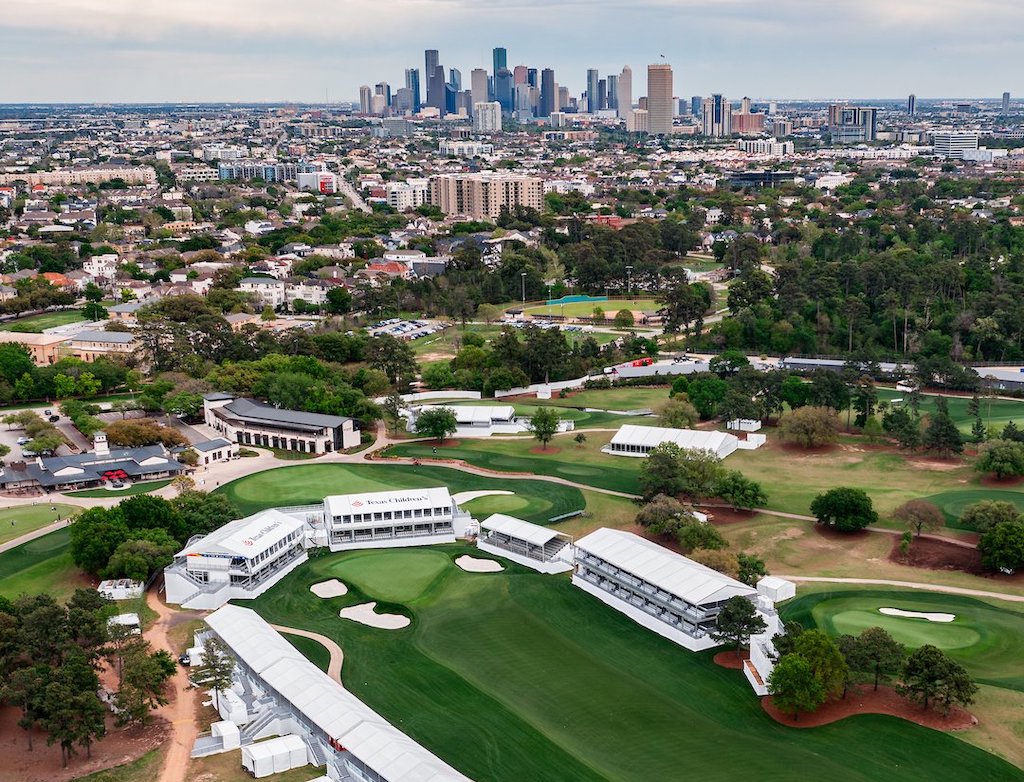
As the Florida swing comes to an end, the PGA Tour makes its way to Houston to play the Texas Children’s Houston Open at Memorial Park Golf Course.
This will be the fourth year that Memorial Park Golf Course will serve as the tournament host. The event did not take place in 2023, but the course hosted the event in 2020, 2021 and 2022.
Memorial Park is a par-70 layout measuring 7,432 yards and features Bermudagrass greens. Historically, the main defense for the course has been thick rough along the fairways and tightly mown runoff areas around the greens. Memorial Park has a unique setup that features three Par 5’s and five Par 3’s.
The field will consist of 132 players, with the top 65 and ties making the cut. There are some big names making the trip to Houston, including Scottie Scheffler, Wyndham Clark, Tony Finau, Will Zalatoris and Sahith Theegala.
Past Winners at Memorial Park
- 2022: Tony Finau (-16)
- 2021: Jason Kokrak (-10)
- 2020: Carlos Ortiz (-13)
In this article and going forward, I’ll be using the Rabbit Hole by Betsperts Golf data engine to develop my custom model. If you want to build your own model or check out all of the detailed stats, you can sign up using promo code: MATTVIN for 25% off any subscription package (yearly is best value).
Key Stats For Memorial Park
Let’s take a look at several metrics for Memorial Park to determine which golfers boast top marks in each category over their last 24 rounds:
Strokes Gained: Approach
Memorial Park is a pretty tough golf course. Golfers are penalized for missing greens and face some difficult up and downs to save par. Approach will be key.
Total Strokes Gained: Approach per round in past 24 rounds:
- Tom Hoge (+1.30)
- Scottie Scheffler (+1.26)
- Keith Mitchell (+0.97)
- Tony Finau (+0.92)
- Jake Knapp (+0.84)
Strokes Gained: Off the Tee
Memorial Park is a long golf course with rough that can be penal. Therefore, a combination of distance and accuracy is the best metric.
Total Strokes Gained: Off the Tee per round in past 24 rounds:
- Scottie Scheffler (+0.94)
- Kevin Dougherty (+0.93)
- Cameron Champ (+0.86)
- Rafael Campos (+0.84)
- Si Woo Kim (+0.70)
Strokes Gained Putting: Bermudagrass + Fast
The Bermudagrass greens played fairly fast the past few years in Houston. Jason Kokrak gained 8.7 strokes putting on his way to victory in 2021 and Tony Finau gained in 7.8 in 2022.
Total Strokes Gained Putting (Bermudagrass) per round past 24 rounds (min. 8 rounds):
- Adam Svensson (+1.27)
- Harry Hall (+1.01)
- Martin Trainer (+0.94)
- Taylor Montgomery (+0.88)
- S.H. Kim (+0.86)
Strokes Gained: Around the Green
With firm and undulating putting surfaces, holding the green on approach shots may prove to be a challenge. Memorial Park has many tightly mowed runoff areas, so golfers will have challenging up-and-down’s around the greens. Carlos Ortiz gained 5.7 strokes around the green on the way to victory in 2020.
Total Strokes Gained: Around the Green per round in past 24 rounds:
- Mackenzie Hughes (+0.76)
- S.H. Kim (+0.68)
- Scottie Scheffler (+0.64)
- Jorge Campillo (+0.62)
- Jason Day (+0.60)
Strokes Gained: Long and Difficult
Memorial Park is a long and difficult golf course. This statistic will incorporate players who’ve had success on these types of tracks in the past.
Total Strokes Gained: Long and Difficult in past 24 rounds:
- Scottie Scheffler (+2.45)
- Ben Griffin (+1.75)
- Will Zalatoris (+1.73)
- Ben Taylor (+1.53)
- Tony Finau (+1.42)
Course History
Here are the players who have performed the most consistently at Memorial Park.
Strokes Gained Total at Memorial Park past 12 rounds:
- Tyson Alexander (+3.65)
- Ben Taylor (+3.40)
- Tony Finau (+2.37)
- Joel Dahmen (+2.25)
- Patton Kizzire (+2.16)
Statistical Model
Below, I’ve reported overall model rankings using a combination of the five key statistical categories previously discussed.
These rankings are comprised of SG: App (24%) SG: OTT (24%); SG: Putting Bermudagrass/Fast (13%); SG: Long and Difficult (13%); SG: ARG (13%) and Course History (13%)
- Scottie Scheffler
- Wyndham Clark
- Tony Finau
- Joel Dahmen
- Stephan Jaeger
- Aaron Rai
- Sahith Theegala
- Keith Mitchell
- Jhonnatan Vegas
- Jason Day
- Kurt Kitayama
- Alex Noren
- Will Zalatoris
- Si Woo Kim
- Adam Long
2024 Texas Children’s Houston Open Picks
Will Zalatoris +2000 (Caesars)
Scottie Scheffler will undoubtedly be difficult to beat this week, so I’m starting my card with someone who I believe has the talent to beat him if he doesn’t have his best stuff.
Will Zalatoris missed the cut at the PLAYERS, but still managed to gain strokes on approach while doing so. In an unpredictable event with extreme variance, I don’t believe it would be wise to discount Zalatoris based on that performance. Prior to The PLAYERS, the 27-year-old finished T13, T2 and T4 in his previous three starts.
Zalatoris plays his best golf on long and difficult golf courses. In his past 24 rounds, he ranks 3rd in the category, but the eye test also tells a similar story. He’s contended at major championships and elevated events in the best of fields with tough scoring conditions. The Texas resident should be a perfect fit at Memorial Park Golf Club.
Alex Noren +4500 (FanDuel)
Alex Noren has been quietly playing some of his best golf of the last half decade this season. The 41-year-old is coming off back-to-back top-20 finishes in Florida including a T9 at The PLAYERS in his most recent start.
In his past 24 rounds, Noren ranks 21st in the field in Strokes Gained: Off the Tee, 30th in Strokes Gained: Around the Green, 25th in Strokes Gained: Total on long and difficult courses and 21st in Strokes Gained: Putting on fast Bermudagrass greens.
In addition to his strong recent play, the Swede also has played well at Memorial Park. In 2022, Noren finished T4 at the event, gaining 2.2 strokes off the tee and 7.0 strokes on approach for the week. In his two starts at the course, he’s gained an average of .6 strokes per round on the field, indicating he is comfortable on these greens.
Noren has been due for a win for what feels like an eternity, but Memorial Park may be the course that suits him well enough for him to finally get his elusive first PGA Tour victory.
Mackenzie Hughes +8000 (FanDuel)
Mackenzie Hughes found himself deep into contention at last week’s Valspar Championship before faltering late and finishing in a tie for 3rd place. While he would have loved to win the event, it’s hard to see the performance as anything other than an overwhelming positive sign for the Canadian.
Hughes has played great golf at Memorial Park in the past. He finished T7 in 2020, T29 in 2021 and T16 in 2022. The course fit seems to be quite strong for Hughes. He’s added distance off the tee in the past year or and ranks 8th in the field for apex height, which will be a key factor when hitting into Memorial Park’s elevated greens with steep run-off areas.
In his past 24 rounds, Hughes is the best player in the field in Strokes Gained: Around the Greens. The ability to scramble at this course will be extremely important. I believe Hughes can build off of his strong finish last week and contend once again to cement himself as a President’s Cup consideration.
Akshay Bhatia +8000 (FanDuel)
Akshay Bhatia played well last week at the Valspar and seemed to be in total control of his golf ball. He finished in a tie for 17th and shot an impressive -3 on a difficult Sunday. After struggling Thursday, Akshay shot 68-70-68 in his next three rounds.
Thus far, Bhatia has played better at easier courses, but his success at Copperhead may be due to his game maturing. The 22-year-old has enormous potential and the raw talent to be one of the best players in the world when he figures it all out.
Bhatia is a high upside play with superstar qualities and may just take the leap forward to the next stage of his career in the coming months.
Cameron Champ +12000 (FanDuel)
Cameron Champ is a player I often target in the outright betting market due to his “boom-or-bust” nature. It’s hard to think of a player in recent history with three PGA Tour wins who’s been as inconsistent as Champ has over the course of his career.
Despite the erratic play, Cam Champ simply knows how to win. He’s won in 2018, 2019 and 2021, so I feel he’s due for a win at some point this season. The former Texas A&M product should be comfortable in Texas and last week he showed us that his game is in a pretty decent spot.
Over his past 24 rounds, Champ ranks 3rd in Strokes Gained: Off the Tee and 30th in Strokes Gained: Total on long and difficult courses. Given his ability to spike at any given time, Memorial Park is a good golf course to target Champ on at triple digit odds.
Robert MacIntyre +12000 (FanDuel)
The challenge this week is finding players who can possibly beat Scottie Scheffler while also not dumping an enormous amount of money into an event that has a player at the top that looks extremely dangerous. Enter McIntyre, who’s another boom-or-bust type player who has the ceiling to compete with anyone when his game is clicking on all cylinders.
In his past 24 rounds, MacIntyre ranks 16th in the field in Strokes Gained: Off the Tee, 17th in Strokes Gained: Around the Green and 10th in Strokes Gained: Total on long and difficult courses.
MacIntyre’s PGA Tour season has gotten off to a slow start, but he finished T6 in Mexico, which is a course where players will hit driver on the majority of their tee shots, which is what we will see at Memorial Park. Texas can also get quite windy, which should suit MacIntyre. Last July, the Scot went toe to toe with Rory McIlroy at the Scottish Open before a narrow defeat. It would take a similar heroic effort to compete with Scheffler this year in Houston.
Ryan Moore +15000 (FanDuel)
Ryan Moore’s iron play has been absolutely unconscious over his past few starts. At The PLAYERS Championship in a loaded field, he gained 6.1 strokes on approach and last week at Copperhead, he gained 9.0 strokes on approach.
It’s been a rough handful of years on Tour for the 41-year-old, but he is still a five-time winner on the PGA Tour who’s young enough for a career resurgence. Moore has chronic deterioration in a costovertebral joint that connects the rib to the spine, but has been getting more consistent of late, which is hopefully a sign that he is getting healthy.
Veterans have been contending in 2024 and I believe taking a flier on a proven Tour play who’s shown signs of life is a wise move at Memorial Park.
- LIKE15
- LEGIT1
- WOW1
- LOL0
- IDHT0
- FLOP0
- OB0
- SHANK2
Opinion & Analysis
Ryan: Why the race to get better at golf might be doing more harm than good

B.F. Skinner was one of the most important psychologists of the 20th century, developing the foundation of the development of reinforcement, and in doing so, creating the concept of behaviorism. In simple terms, this means that we are conditioned by our habits. In practical terms, it explains the divide between the few and far between elite instructors and college coaches.
To understand the application, let’s quickly review one of B.F. Skinner’s most important experiments; superstitions in the formation of behavior by pigeons. In this experiment, food was dispensed to pigeons at random intervals. Soon, according to Skinner, the pigeons began to associate whatever action they were doing at the time of the food being dispensed. According to Skinner, this conditioned that response and soon, they simply haphazardly repeated the action, failing to distinguish between cause and correlation (and in the meantime, looking really funny!).
Now, this is simply the best way to describe the actions of most every women’s college golf coach and too many instructors in America. They see something work, get positive feedback and then become conditioned to give the feedback, more and more, regardless of if it works (this is also why tips from your buddies never work!).
Go to a college event, particularly a women’s one, and you will see coaches running all over the place. Like the pigeons in the experiment, they have been conditioned into a codependent relationship with their players in which they believe their words and actions, can transform a round of golf. It is simply hilarious while being equally perturbing
In junior golf, it’s everywhere. Junior golf academies make a living selling parents that a hysterical coach and over-coaching are essential ingredients in your child’s success.
Let’s be clear, no one of any intellect has any real interest in golf — because it’s not that interesting. The people left, including most coaches and instructors, carve out a small fiefdom, usually on the corner of the range, where they use the illusion of competency to pray on people. In simple terms, they baffle people with the bullshit of pseudo-science that they can make you better, after just one more lesson.
The reality is that life is an impromptu game. The world of golf, business, and school have a message that the goal is being right. This, of course, is bad advice, being right in your own mind is easy, trying to push your ideas on others is hard. As a result, it is not surprising that the divorce rate among golf professionals and their instructors is 100 percent. The transfer rate among college players continues to soar, and too many courses have a guy peddling nefarious science to good people. In fact, we do at my course!
The question is, what impact does all this have on college-age and younger kids? At this point, we honestly don’t know. However, I am going to go out on a limb and say it isn’t good.
Soren Kierkegaard once quipped “I saw it for what it is, and I laughed.” The actions of most coaches and instructors in America are laughable. The problem is that I am not laughing because they are doing damage to kids, as well as driving good people away from this game.
The fact is that golfers don’t need more tips, secrets, or lessons. They need to be presented with a better understanding of the key elements of golf. With this understanding, they can then start to frame which information makes sense and what doesn’t. This will emancipate them and allow them to take charge of their own development.
- LIKE14
- LEGIT4
- WOW1
- LOL2
- IDHT0
- FLOP1
- OB0
- SHANK11
-

 19th Hole1 week ago
19th Hole1 week agoJohn Daly stuns fans into silence with brutal opening tee shot on PGA Tour Champions
-

 19th Hole3 days ago
19th Hole3 days agoThings got heated at the Houston Open between Tony Finau and Alejandro Tosti. Here’s why
-

 19th Hole2 weeks ago
19th Hole2 weeks ago2-time major champ announces shock retirement from the sport at age of 33
-

 19th Hole1 week ago
19th Hole1 week agoCharlie Woods finds it tough going on American Junior Golf Association debut
-

 19th Hole2 weeks ago
19th Hole2 weeks agoEdoardo Molinari reveals the latest PGA Tour golfer to turn down ‘good offer’ from LIV Golf
-

 19th Hole2 weeks ago
19th Hole2 weeks agoScottie Scheffler had an interesting response when asked how he ‘quiets the noise’ following Players victory
-

 19th Hole2 weeks ago
19th Hole2 weeks agoJon Rahm dealt fresh blow to hopes of qualifying for 2025 Ryder Cup
-

 19th Hole1 day ago
19th Hole1 day agoAddiction, spinal fusion, and scam artists – Everything Anthony Kim revealed in candid interview with David Feherty



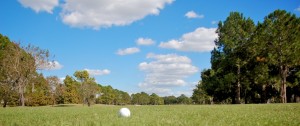


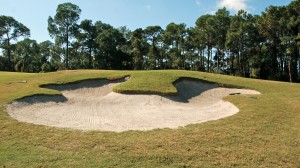
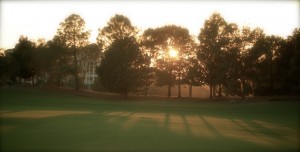

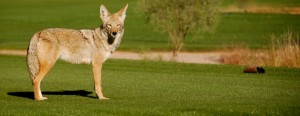






















fx volume data csv
Aug 9, 2014 at 6:47 am
The trader goes long the currency with a high interest rate and finances that purchase with a currency with a low
interest rate. There doesn’t tend to be a great fluctuation between the values of currencies because the international monetary fund (IMF) and the world banks want
there to be global economic security, within acceptable parameters.
Ultimate Flora fx also utilized GDL (Glucono delta
lactone), which is a patented nutrient, which nourishes
the beneficial bacteria in the gut.
T.Litz
Jan 16, 2013 at 12:36 am
Great points Den. Multitasking does help..in a golf course? for me it’s one or the other. First I suck at golf which I determined later and convinced that I can’t be good at everything so I slowly reduced the amount of energy trying and spend just a tad more into my photography…then there’s bliss.